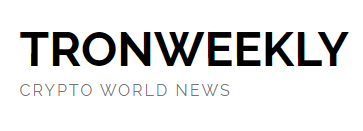Not too long ago, managing cryptocurrency across different blockchains was a hassle. If you wanted to hold Bitcoin, you needed a Bitcoin wallet. If you had Ethereum, that required a different wallet. And if you were investing in altcoins across multiple chains? That meant juggling even more wallets and constantly moving funds between them.
This setup was frustrating, time-consuming, and often expensive due to network fees. However, as blockchain technology evolved, so did the need for a more streamlined way to store and transfer assets. That’s where cross-chain wallets come in, offering a way for users to manage multiple cryptocurrencies across different blockchains without constantly switching platforms.
Why Cross-Chain Wallets Matter for Early Crypto Sales
One of the biggest trends in crypto investing right now is early crypto sales, where investors can buy new tokens before they hit the market. The problem is these presales often happen across different blockchains, meaning investors have to navigate multiple wallets just to participate.
Cross-chain wallets make this process easier by allowing seamless transactions across different networks. The ideal platform would support multiple blockchains and offer benefits like reduced transaction fees, governance voting, and access to exclusive projects. With a wallet like this, investors can participate in a crypto presale from a single platform instead of having to manage different wallets for each blockchain.
What Exactly Is a Cross-Chain Wallet?
A cross-chain wallet or multi-chain wallet, is designed to work with multiple blockchain networks. Instead of being locked into a single ecosystem like Bitcoin or Ethereum, users can send, receive, and store assets from different blockchains all in one place.
This is progress for crypto users who want to interact with decentralized finance (DeFi) apps, trade NFTs, or invest in new tokens without the headache of transferring funds between wallets. These wallets remove the barriers that once made blockchain interaction complicated, allowing for a much more flexible and efficient experience.
How Do Cross-Chain Transactions Work?
To make this seamless experience possible, cross-chain wallets rely on several key technologies. One of the most important is blockchain bridges, which allow assets to be moved from one blockchain to another. Without these bridges, transactions between different networks wouldn’t be possible.
Another essential component is atomic swaps, which provide a decentralized way to exchange one cryptocurrency for another across different blockchains without relying on a third party.
The Benefits of Using a Cross-Chain Wallet
Cross-chain wallets are becoming an essential tool for crypto users because they provide a much more streamlined experience. Instead of dealing with multiple wallets for different assets, users can manage everything from a single application. This reduces the complexity of storing and transferring funds while also making transactions more efficient.
Cost savings are another major advantage. Many cross-chain wallets offer fee reductions, helping users save money on blockchain transaction fees. Since different blockchains have their own fee structures, consolidating assets in a single wallet that optimizes transaction costs can make a significant difference.
For investors, cross-chain wallets create additional opportunities. Participating in DeFi projects, buying NFTs, and investing in token presales across multiple blockchains becomes much easier. Instead of worrying about whether a specific wallet supports a particular blockchain, users can access new projects as they launch without technical barriers getting in the way.
What’s Next for Cross-Chain Wallets?
As blockchain technology continues to advance, cross-chain wallets will become even more powerful and efficient. Innovations in layer-2 scaling solutions, decentralized bridges, and enhanced security protocols will make transactions faster and safer. More projects are working on expanding interoperability between different blockchains, ensuring a smoother experience for users.
For crypto investors and enthusiasts, cross-chain wallets are no longer just a convenience—they are becoming a necessity. Whether participating in token presales, swapping assets across different blockchains, or simply looking for a more efficient way to manage digital assets, these wallets are paving the way for a more connected and accessible crypto ecosystem.

 8 months ago
39
8 months ago
39




 English (US) ·
English (US) ·